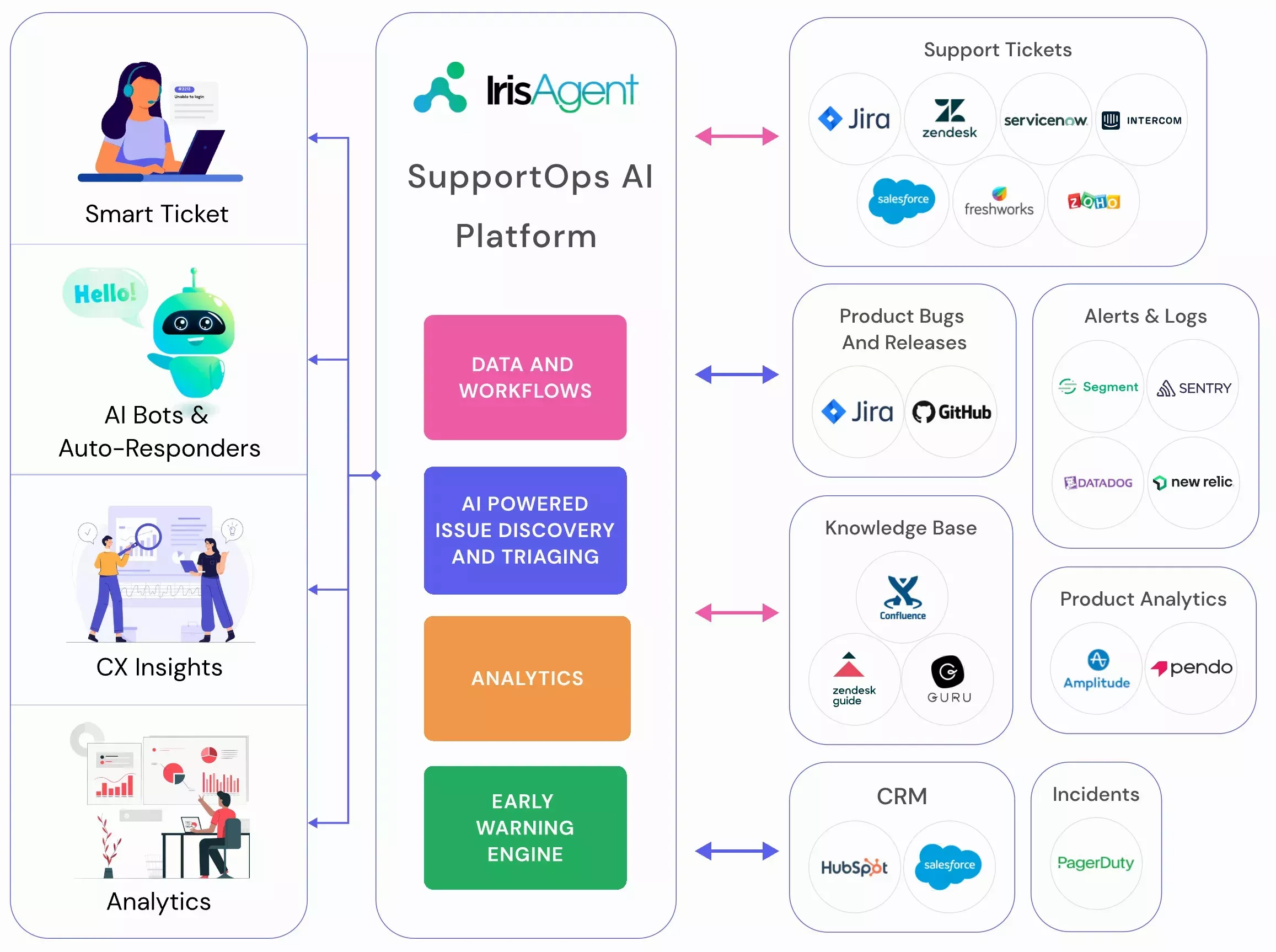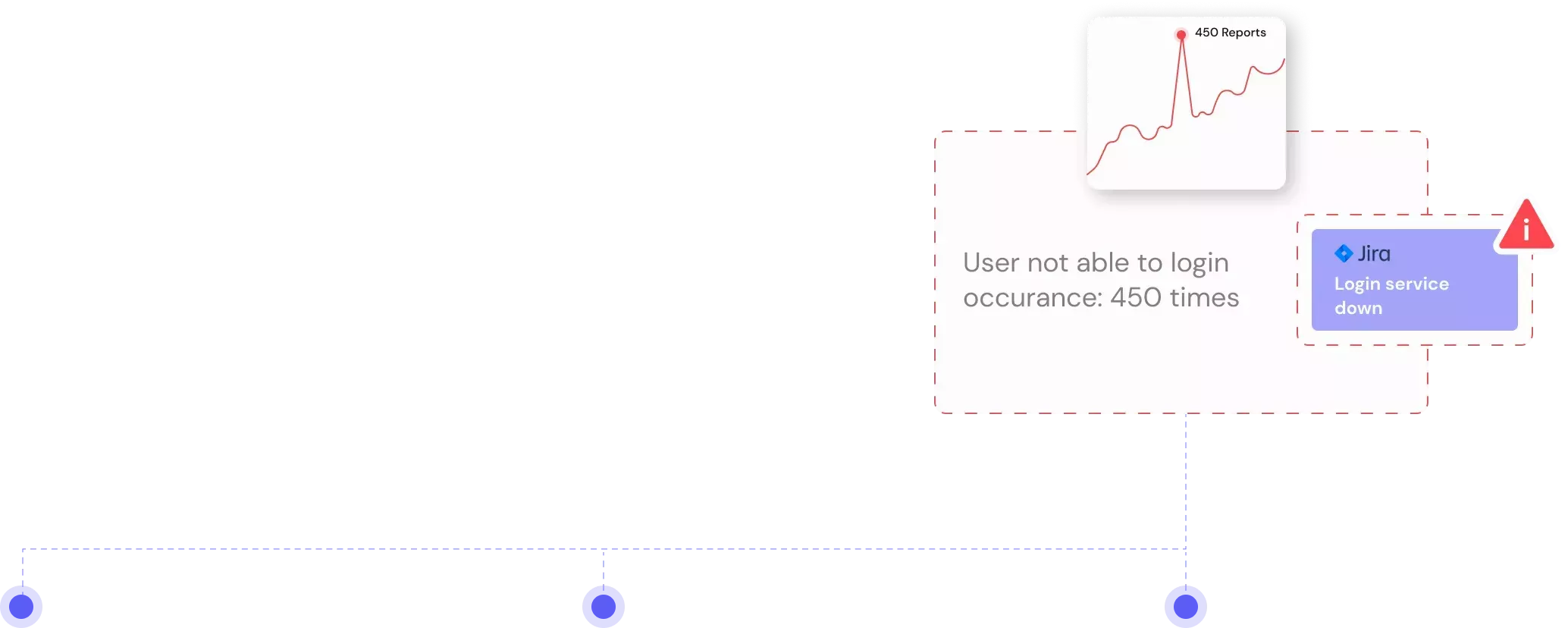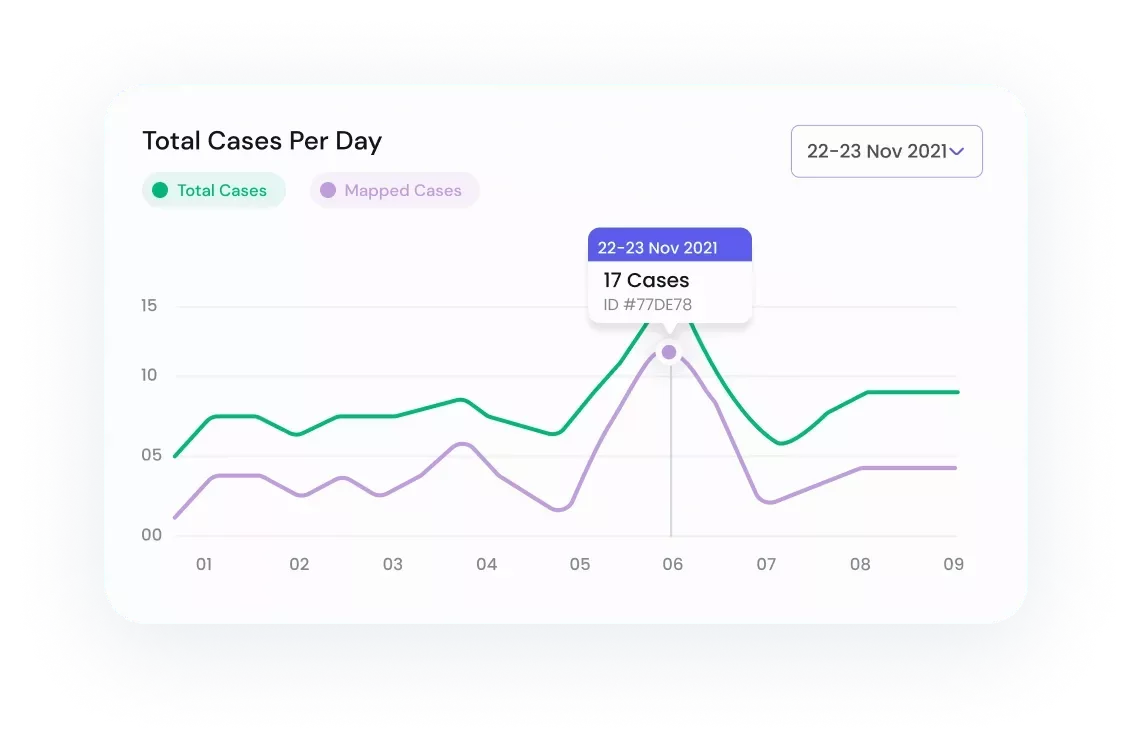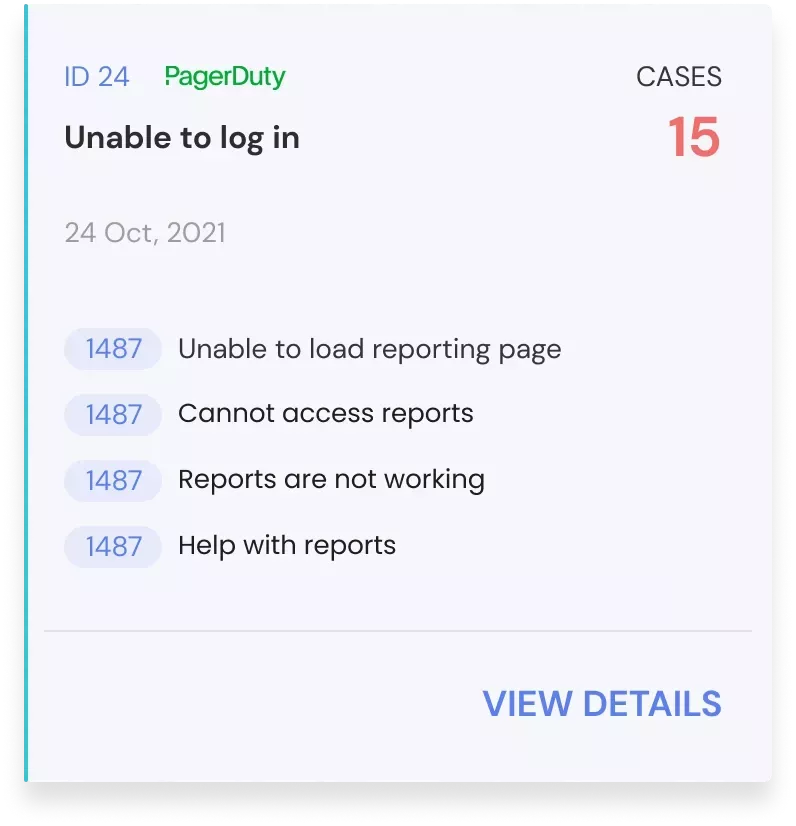Better collaboration and
partnership with engineering
teams
Proactive Support with AI-powered ticket triaging
Discover root cause, assign, and triage tickets
automatically. Correlate customer support tickets
with engineering issues to contextualize user issues
and prevent costly engineering escalations.Discover root cause, assign, and triage tickets
automatically. Correlate customer support tickets
with engineering issues to contextualize user issues
and prevent costly engineering escalations.
automatically. Correlate customer support tickets
with engineering issues to contextualize user issues
and prevent costly engineering escalations.Discover root cause, assign, and triage tickets
automatically. Correlate customer support tickets
with engineering issues to contextualize user issues
and prevent costly engineering escalations.

FOR CUSTOMER SUPPORT TEAMS

Real-time correlation of tickets, alerts & bugs for faster resolution
Support teams benefit from AI-powered ticket triaging, which improves response times and prevents costly escalations by intelligently assigning tickets. Identify when a product release or bug is the source of a customer issue.

Better collaboration and
partnership with
engineering teams

Workflow automations to
save manual labor and
avoid mistakes

Instant problem discovery
to help you resolve
support tickets faster
FOR CUSTOMER SUPPORT TEAMS
Real-time correlation of tickets, alerts & bugs for faster resolution
IrisAgent can identify when a product release or
feature regression/bug is the source of a customer
issue. Resolve support tickets faster and get alerts
about product bugs.
feature regression/bug is the source of a customer
issue. Resolve support tickets faster and get alerts
about product bugs.



Workflow automations to
save manual labor and avoid
mistakes
save manual labor and avoid
mistakes

Instant problem discovery to
help you resolve support
tickets faster
help you resolve support
tickets faster

FOR CUSTOMER SUPPORT TEAMS
Discover trending
customer issues with
anomaly detection
Our Early Warning Engine detects product and
customer experience issues based on anomalies and
trends in customer support agents and users' data.
customer experience issues based on anomalies and
trends in customer support agents and users' data.


Find and Resolve impactful
issues that are affecting
customers at scale
Find and Resolve impactful issues
that are affecting customers at scale

Create automated
workflows for real-time
alerts
Create automated workflows for
real-time alerts

Collaborate with internal
product and engineering
teams
Collaborate with internal product
and engineering teams
FOR PRODUCT AND ENGINEERING TEAMS
Know the revenue and customer sentiment impact of product bugs
- Prioritize product bugs with a significant
impact on customer support - Know which customers are impacted by
key bugs - Bugs and tickets are synchronized as
they update

Transform your customer
support operations
support operations
10x
faster responses
40%
tickets deflected
95%
accuracy with no hallucinations
Any questions?
We got you.

Ticket triaging is a critical process in handling customer queries, support documents, and concerns. It helps companies manage and prioritize a high volume of support tickets according to their urgency and significance. With an efficient ticket triaging process, support teams can speed up their responses to critical issues and improve their overall customer service. In any helpdesk scenario, ensuring that tickets are addressed in a timely and effective manner is crucial, and that’s where ticket triaging comes into play. Recently, AI has been introduced into ticket triage to automate and streamline the manual triage process. AI helps to triage tickets by using machine learning algorithms to analyze the content of support tickets and automatically assign them a priority level, based on historical knowledge, sentiment, and intent. This automation reduces the manual labor involved in the triage process and can significantly increase ticket resolution speed, leading to higher customer satisfaction rates.
Typically, ticket triaging is a process where support tickets are analyzed, prioritized, and assigned to the right team or agent to ensure the quickest possible resolution of customer requests. It starts with the creation of a support ticket where someone reports an issue. This ticket is then assessed based on predefined factors such as urgency, complexity, and the required skillset for resolution. After this process, known as ticket triaging, the ticket is sent to an appropriate team member or agent for resolution. Nowadays, AI ticket triage systems are increasingly being used for automating and improving the ticketing automation triaging process. AI ticket triage uses machine learning algorithms to analyze past ticket data and learn patterns related to the assignment and resolution of tickets. This allows a triage system to predict the best possible team or agent for new tickets, thereby reducing the time required for ticket resolution and improving customer satisfaction.
In a ticketing system and triaging system, tickets are categorized based on several criteria, including priority, type of issue or request, affected system or service, and who is responsible for resolving the issue. These criteria ensure that the appropriate resources are allocated to resolve the issue most efficiently. Ticketing and ticket triaging is critical in managing a large volume of tickets and ensuring the speedy resolution of issues. The use of AI ticket triage can further enhance this process, by using training data and utilizing machine learning algorithms to automate the categorization and prioritization of tickets. This increases efficiency and minimizes errors that could be made during manual categorization. AI ticket triage can learn from past data and continually improve the accuracy and speed of the ticket triage system, providing significant customer benefits.
Ticket triaging plays a significant role in enhancing customer satisfaction by ensuring that service requests are managed efficiently. When tickets are categorized and prioritized effectively, high-priority support issues, such as critical technical problems or urgent customer needs, are addressed promptly, minimizing downtime and frustration. Customers appreciate quick responses and resolutions, which in turn positively impact their satisfaction. Additionally, by triaging tickets, lower-priority tickets are managed in an organized manner, preventing them from overshadowing critical issues. This streamlined approach ensures that resources are allocated where they are needed most, contributing to faster issue resolution times and an overall improved customer experience. Furthermore, ticket triaging allows support teams to identify recurring trends and areas for improvement, leading to better service and long-term customer loyalty.
Yes, ticket triaging can be automated using machine learning software like IrisAgent. Automated ticket triage systems can analyze incoming service requests or tickets based on criteria such as issue type, urgency, and keywords. Machine learning algorithms can also be employed to improve the accuracy of ticket categorization and prioritization continually. This automation of ticket ai streamlines the process by swiftly prioritizing tickets, directing high-priority tickets to the appropriate personnel and placing lower-priority tickets in organized queues. By automating ticket triage, organizations can reduce manual workloads, respond to critical issues more quickly, and enhance overall efficiency in customer support or service management operations.
Success in ticket triaging is typically measured by looking at several key performance indicators. These may include the time taken to respond to a ticket initially, the total time spent on routing tickets, resolving the issue, the number of tickets resolved within the stipulated service level agreement (SLA), and the customers' satisfaction rate. By closely monitoring these metrics, it becomes easier to assess the effectiveness of your ticket triage and ticket automation process.
Try IrisGPT on your data for free
